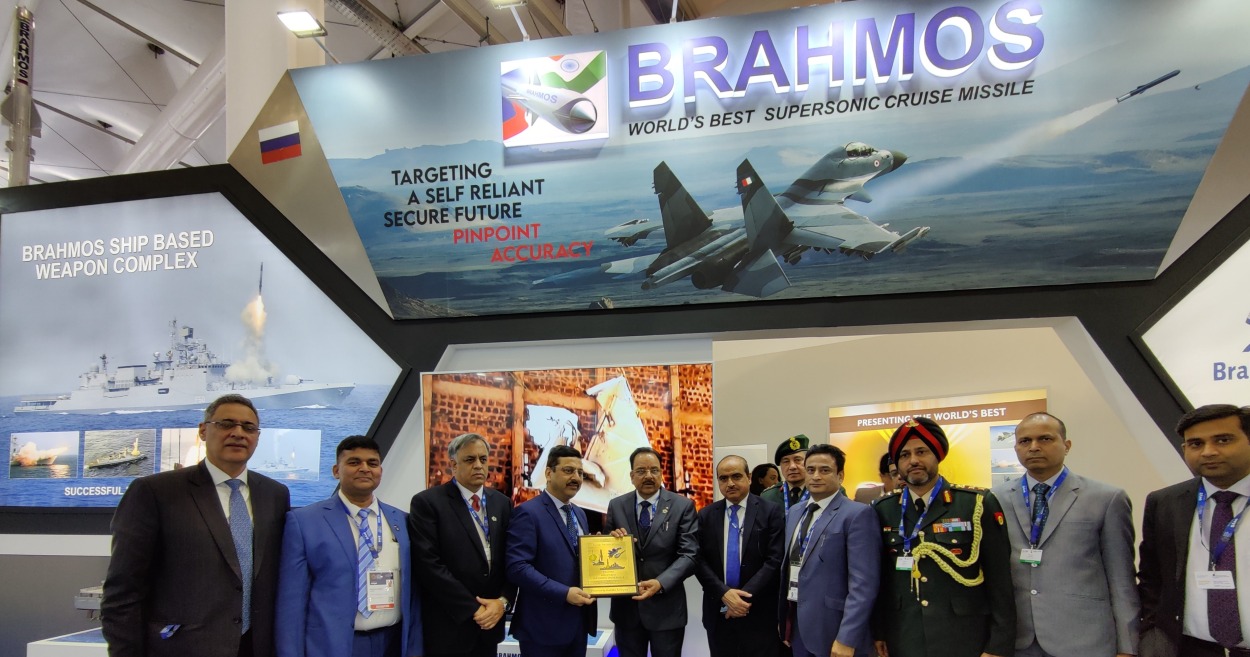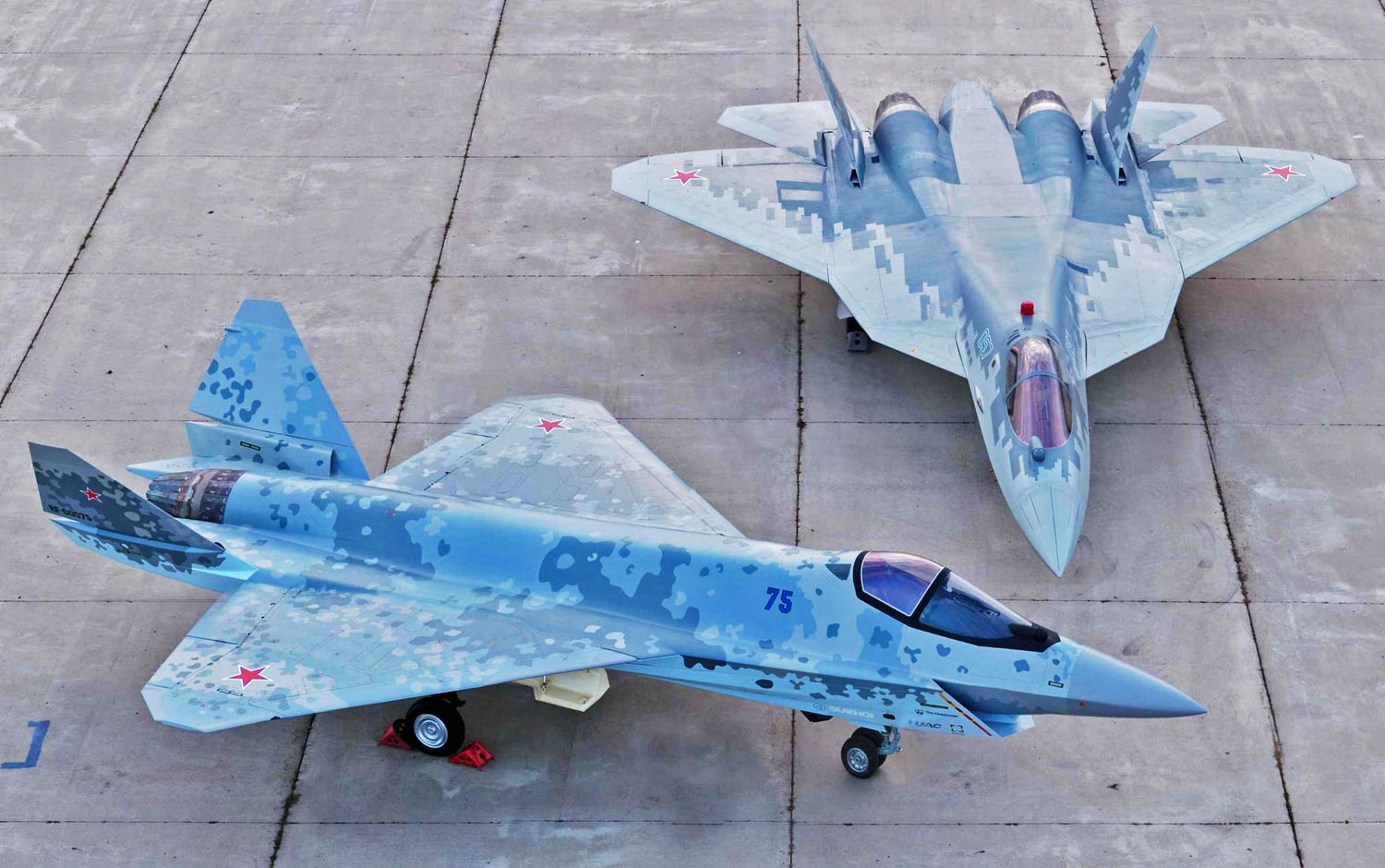India promoted its supersonic cruise missile BrahMos – the poster child of its defense exports — at the recently concluded World Defense Show hosted by Saudi Arabia. With India looking to sell the weapon, there is speculation that the BrahMos is on offer to the Saudi kingdom.
During the keenly-watched defense show that concluded on February 8, some reports in local Russian media, which apparently cited an official from the BrahMos Aerospace joint venture, suggested it was in talks with Saudi Arabia for a potential sale of the supersonic cruise missile.
Praveen Pathak, Director of Exports at BrahMos Aerospace, told the media on the show’s sidelines, “We expect several high-level meetings, and we hope that our joint product will be promoted in these regions. A great deal of interest has been shown here [in Saudi Arabia], and we have previously met with Saudi delegations at other exhibitions. We are very hopeful for these negotiations.”
Union Minister of State for Defence & Tourism, Ajay Bhatt, India’s Ambassador to the Kingdom of Saudi Arabia, Dr. Suhel Ajaz Khan, and Additional Secretary Anurag Bajpai were in attendance at the BrahMos pavilion at the defense show, showcasing its resolve to advance exports while forging close relationships with its middle eastern partners.
Although the Indian government or the Saudi kingdom is yet to make an official statement, reports in Russian and Indian media have suggested that the export of the missile to Southeast Asian and Middle Eastern countries is on the agenda.
India seeks to transform into a major defense exporter and has already sold cutting-edge missiles to the Philippines. It is seeking more customers for this vaunted system.

In a recent interview with ANI, DRDO Chairman Dr Samir V Kamat said the missiles would be dispatched and anticipated to reach the Philippines by the end of March this year.
The missiles are part of a huge defense export contract valued at USD 375 million and are the largest such agreement India has ever entered with a foreign nation.
BrahMos is a modification of Soviet-era anti-ship missiles (Oniks, Yakont) developed by the Reutov Design Bureau in the late 1980s. It derives its name from India’s Brahmaputra and Russia’s Moskva rivers. India is banking on the superior features of this missile to advance exports.
The BrahMos is a supersonic cruise missile powered by ramjets and has a solid propellant booster. It can be fired from land-based canisters, submarines, ships, and airplanes. Its current top speed is Mach 2.8 to 3.0; however, for the hypersonic version, it will reach a speed of Mach 5.0.
It can fly very close to the ground to evade missile defense systems, which is one of its unique characteristics. Indeed, in the final phase, the missile can descend 10 meters above the ground. The missile uses inertial guidance or an active radar seeker during the last stage.
In January 2021, India drew up a list of friendly countries to which the BrahMos cruise missile could be sold. The list based on “interest shown by potential customers” featured the Philippines, Indonesia, Vietnam, Saudi Arabia, the UAE, and South Africa.
The Indian government observed that the BrahMos had quickly emerged as the “precision-strike weapon of choice.”
More countries have since been added to the list. Potential users include the Philippines, South Korea, Algeria, Greece, Malaysia, Thailand, Egypt, Singapore, Venezuela, the UAE, Chile, South Africa, and Vietnam. Delegations from these nations have shown serious interest.
An unnamed source told the Financial Express in November 2022 that talks with Saudi Arabia were progressing after a long haul heralded by the pandemic. “The discussions were delayed due to the COVID-19 pandemic; however, now the talks are back on track. It is expected that the deal could be sealed soon,” a source had said.
Atul Rane, the Managing Director and CEO of the BrahMos Aerospace Russia-India Joint Venture told TASS in August 2022 that in the next two years, about three or four nations in Southeast Asia and the Middle East will buy BrahMos supersonic cruise missiles. “In the Middle East, it could be UAE, Saudi Arabia,” Rane stressed.
In fact, at the beginning of June 2023, Rane had said on the sidelines of an industry meet that “every country over the world has been asking us, can we buy BrahMos, right from 2001 when we did our first flight trial. We had to cater to the interest of our armed forces first, and we have a little bit of spare capacity”.
He also mentioned that BrahMos “bagged our first order in 2022… This has only opened the door. Now we are in conversation with over a dozen countries… which ones, when, well, that time will only tell,” Rane said.
With Saudi Arabia looking to bolster its arsenal to combat regional adversaries and non-state actors, it has emerged as a natural customer for India, which has long held the position of being among the biggest defense importers in the world. Since the export of LCA Tejas is yet to take off, the Indian government is banking on indigenously produced systems. BrahMos is 96% indigenous.
The export director of BrahMos, an Indian-Russian corporation that produces supersonic missiles, told TASS that the company has orders totaling US$7 billion. “The portfolio of orders of BrahMos has already reached US $7B, which includes both Indian and export orders,” he said at World Defense Show 2024.
Russia’s Su-75 On Offer To India
Several experts have recently expressed concern that entering into a joint venture-type arrangement with Russia to produce a Su-75 stealth fighter could attract sanctions or lead to delays owing to the unavailability of parts needed to manufacture the aircraft.
There have been overarching concerns about US sanctions, besides Russia being entangled in the Ukraine war. Even countries that have traditionally bought their military equipment are dissuaded from investing in a promising yet ambivalent program that may not put them in a lurch.
However, Indian military expert and former IAF pilot Vijainder K Thakur quashed these worries by arguing that India would have to pursue its interests by following in the footsteps of US allies like Turkey, Saudi Arabia, and the UAE, who have expressly ignored the threat of sanctions.
In February last year, Russian state-owned defense conglomerate Rostec announced that it planned to invite India to jointly develop a program for the Sukhoi Su-75 Checkmate fighter aircraft.
Earlier this month, Russia offered an attractive opportunity to Arab nations to engage in joint development of a new fighter jet utilizing the Su-75 Checkmate light aircraft platform. With the aircraft still in the conceptual phase, Moscow seeks committed allies ready to finance and eventually acquire the ‘stealth fighter.’
Moscow intends to sell this aircraft to countries interested in modernizing their military aircraft fleets and are acquainted with Soviet/Russian technology, mainly since it is doubtful that the US will supply them with F-35s. Only three countries have stealth aircraft: the United States, Russia, and China.
With features including configurable external designs, adaptable open architecture, and cost-effectiveness per flying hour comparable to the US F-35, the Su-75 Checkmate is positioned to appeal to budget-conscious purchasers.
Since it is now apparent that Moscow is looking for a potential partner to develop the aircraft, the focus is back on New Delhi.
However, India has essentially distanced itself from any such propositions despite its close strategic relationship with Russia. For instance, former IAF Air Chief Marshal RKS Bhadauria categorically stated in 2019, “There are no plans for a foreign FGFA (Fifth Generation Fighter Aircraft) now or in the foreseeable future. The FGFA for the IAF will be the indigenous AMCA for which work has already started.”
The focus in India is admittedly on developing indigenous capability. Additionally, there are reports that the largest arms importer in the world has been gradually shifting its focus to the West as Washington has been trying to limit an increasingly assertive China by fortifying its relations with New Delhi.
Furthermore, it has not helped that the Su-75 is reportedly based on the Su-57 Felon stealth fighter jet. India and Russia collaborated on the next-generation fighter program; however, there were issues with technology transfer and aircraft design criteria at the time, ultimately leading to India withdrawing from the fighter’s development.
The decision came as a big shock to Moscow.

The latest reports of India being wooed for the Su-75 development follow a report published in the official Russian media TASS, which stated that technical modifications were made to the aircraft to reduce costs based on input from prospective purchasers. In essence, Moscow is doing everything possible to make the collaborative development attractive for partners and allies, albeit with no success.
Thakur believes that a joint venture for the development of Su-75, which is a promising Russian light tactical stealth aircraft, would help plug the stealth gap in India’s capability. In addition to this, Thakur argues, it will help India attract more customers for export and allow it to fulfill its ambitions of becoming the defense exporter it seeks to become.
The aircraft, for which design started in early 2020, has been continually delaying the deadline for building the prototype due to a lack of outside funding and a buyer. They are building two test planes. As the aircraft has not yet been produced, the Western media has begun to refer to the Su-75 as “vaporware.”
- Contact the author at sakshi.tiwari9555(at)gmail.com
- Follow EurAsian Times on Google News




